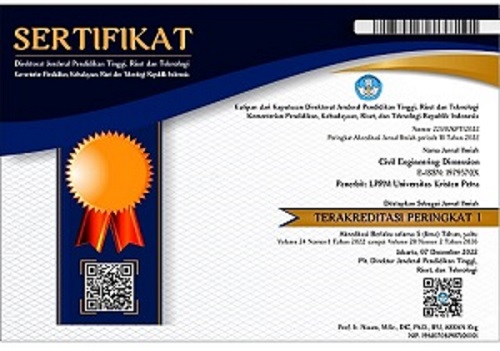DATA COLLECTION METHOD FOR PEDESTRIAN MOVEMENT VARIABLES
 :
:
https://doi.org/10.9744/ced.2.1.pp.%2043-48
Keywords:
Microscopic pedestrian model, image processing.Abstract
The need of tools for design and evaluation of pedestrian areas, subways stations, entrance hall, shopping mall, escape routes, stadium etc lead to the necessity of a pedestrian model. One approach pedestrian model is Microscopic Pedestrian Simulation Model. To be able to develop and calibrate a microscopic pedestrian simulation model, a number of variables need to be considered. As the first step of model development, some data was collected using video and the coordinate of the head path through image processing were also taken. Several numbers of variables can be gathered to describe the behavior of pedestrian from a different point of view. This paper describes how to obtain variables from video taking and simple image processing that can represent the movement of pedestrians and its variablesDownloads
Published
2004-06-02
How to Cite
Teknomo, K., Takeyama, Y., & Inamura, H. (2004). DATA COLLECTION METHOD FOR PEDESTRIAN MOVEMENT VARIABLES. Civil Engineering Dimension, 2(1), pp. 43-48. https://doi.org/10.9744/ced.2.1.pp. 43-48
Issue
Section
Articles
License
Authors who publish with this journal agree to the following terms:- Authors retain the copyright and publishing right, and grant the journal right of first publication with the work simultaneously licensed under a Creative Commons Attribution License that allows others to share the work with an acknowledgement of the work's authorship and initial publication in this journal.
- Authors are able to enter into separate, additional contractual arrangements for the non-exclusive distribution of the journal's published version of the work (e.g., post it to an institutional repository or publish it in a book), with an acknowledgement of its initial publication in this journal.
- Authors are permitted and encouraged to post their work online (e.g., in institutional repositories or on their website) followingthe publication of the article, as it can lead to productive exchanges, as well as earlier and greater citation of published work (See The Effect of Open Access).
















